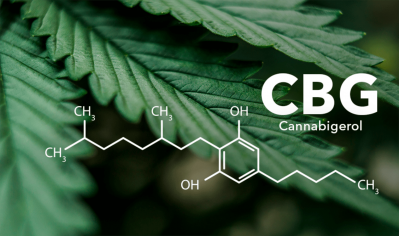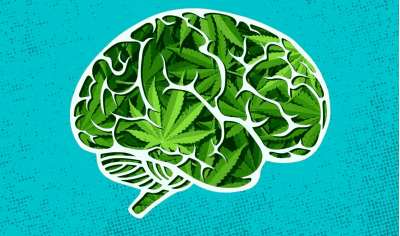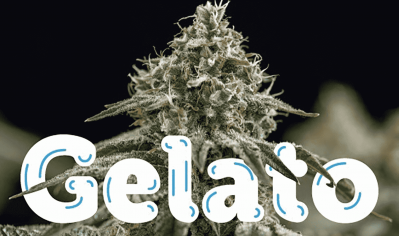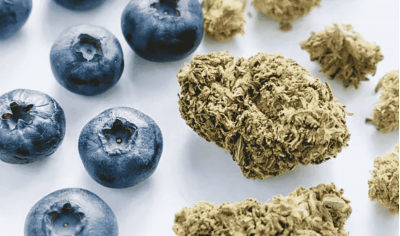Endocannabinoid system

The endocannabinoid system (ECS) is a complex system that was discovered in the early 90s by scientists who studied THC. Phytocannabinoids (including THC and CBD) are not part of the ECS, but exert many of their effects on the body through this system. Before the discovery of EKS, similarly, opioid receptors were found in the body that bound opioid molecules obtained from plants. This discovery led to an understanding of the endorphin system. The discoveries of the EC and endorphin systems have brought an amazing understanding of the body's functions, which have not yet been fully studied.
The bright minds of mankind are still trying to fully study the EKS. At the moment it is known that it plays a role in the regulation of a huge number of functions and processes in the body, including:
· Sleep
· Mood
· Appetite
· Memory
· Immune system
· Fertility
EX is active even if you have never used cannabis!
So how does it work?
The endocannabinoid system includes three key components: endocannabinoids, receptors, and enzymes.
Endocannabinoids
Endocannabinoids, also called endogenous cannabinoids, are substances similar in structure and action to the active components of cannabis, only they are produced by brain neurons, hence the prefix "endo-".
Scientists have found two key endocannabinoids:
· Anandamide
· 2-arachidonoylglycerol

They help our internal processes to proceed correctly and smoothly. It is not necessary for you to know their chemical structure and names, it is enough that you are aware that they exist. Your body produces them as needed, which makes it difficult to determine their exact levels in the body.
Endocannabinoid receptors
These receptors are found throughout your body. Endocannabinoids bind to these receptors to send ECS signals.
At the moment, two main receptors have been discovered. These are the so-called CB1 and CB2 receptors. It is assumed that there is another 3, not an open receptor, but it has not yet been identified and the mechanism is not understood. Endocannabinoids can bind to any of these receptors. For example, some can interact with CB1 receptors and relieve pain. And others will bind to CB2 receptors in your immune cells to tell your body that there is inflammation that needs to be eliminated.
Cannabinoid receptors CB1 and CB2
CB1 was first discovered in the central nervous system, which led to the misconception that the receptor was limited to the brain. CB2, later discovered in the spleen, was also mistakenly considered only a peripheral receptor, which is limited to interaction only with the immune system. However, after additional studies, it was found that CB1 and CB2 receptors are expressed in different concentrations in both the central and peripheral nervous systems.
CB1 is the receptor through which the phytocannabinoid THC exerts its psychoactive properties. This is, of course, the most common cannabinoid receptor in the body with the highest density in the central nervous system. The CB1 receptor is found in many places outside the central nervous system, including the heart, blood vessels, intestines, and immune cells. Such a spread indicates the multiplicity of functions performed by the receptor.
THC has not only a partial affinity for CB1 and CB2 receptors, but also has a wide range of interactions with non-cannabinoid receptors, transport systems and enzymes widely distributed throughout the body.
Despite the fact that THC is known for its psychoactive effects, the fact that THC is a partial agonist*** of CB1 receptors has attracted a lot of attention. This proves that part of the physiological effects of THC occur outside the ECS.
***Agonist is a chemical compound that, when interacting with a receptor, changes its state, leading to a biological response. Normal agonists increase the response of the receptor, inverse agonists decrease it, and antagonists block the action of the receptor.
It is now recognized that CB1 is present in other organs in addition to the CNS and includes the cardiovascular, pulmonary, gastrointestinal, skin, immune, and ophthalmic systems. Although this receptor is highly active in the CNS, its presence in many organs suggests что EX performs an important function in the body. Additional activity of phytocannabinoids on non-cannabinoid receptors in the body only confirms the conclusion that cannabinoids perform multiple functions.
In the CNS, the CB1 receptor is especially abundant in several regions, including the cerebral cortex, basal ganglia, and cerebellum. The second area with a lot of CB1 is the limbic lobe and the hippocampus. The abundant presence of CB1 in these areas of the brain probably underlies how THC affects motor activity and emotional sensations, respectively.
Observation of the effect of THC on humans revealed additional effects on motor control, which included impairment of fine motor skills. Other effects, including appetite stimulation, regulation of nausea and vomiting, analgesia, and improvement of sleep quality are widely known and now recognized properties of THC. Some of these discoveries have led to the development of approved pharmaceutical products since the 1980s. Information about the CB2 receptor is much less extensive than information about the CB1 receptor. Although it was first identified in the spleen and circulating lymphocytes, it has now been established that it is present in both peripheral and central sites, including microglia, monocytes, mast cells, and B-lymphocytes. That is, in everything that is responsible for immunity.
Unlike CB1, the CB2 receptor is difficult to detect. Ego is detected using classical antibody methods. It is possible that manipulation of the CB2 receptor may play an important role in many processes, including any inflammation, osteoporosis, cancer, and neuropsychiatric conditions such as anxiety and addiction. Raphael Meshulam suggested that the CB2 receptor may be part of the body's defense system against infections and is damaged. This belief is supported by research based on the observation that the CB2 receptor has affinity for endocannabinoids and other receptor agonists. Endocannabinoids are produced in response to many pathological conditions, including cardiovascular, neurodegenerative, neuropsychiatric and pain conditions.
Location of receptors in the body

Enzymes
These complex substances are necessary to release endocannabinoids that have already performed their function. There are many enzymes in humans, their interactions and effects on metabolism are still being studied, and we will not focus on them in particular, it is enough to know that they exist.
The main functions of EX

Scientists have not yet clarified all the functions performed by the ECS, because it is a very complex system. ECS is associated with the following processes:
· Inflammatory processes and other reactions of the immune system
· Metabolism
· Chronic pains
· Motor functions
· Functioning of the cardiovascular system
· Restoration of cells and nerves
All these functions lead to homeostasis (constancy of the body). For example, you were affected by an external force that led to an injury or an elevated temperature: this disturbs the balance of your body. But here the EX comes into play to help the body return to a healthy state. Scientists are convinced that this is the main task of the EKS.
Let's find out how the two most famous cannabinoids interact with ECS, namely tetrahydrocannabinol (THC) and cannabidiol (CBD). As you already know, THC is the component of cannabis that causes a feeling of euphoria. As soon as it enters our body, it begins to interact with ECS, binding to receptors, just like endocannabinoids. It can bind to both CB1 and CB2 receptors. This allows you to get various effects on your body and mind. For example, THC can reduce pain and awaken a voracious appetite in people who suffer from anorexia. But it can also cause anxiety and in some cases even paranoia. Scientists are working on getting synthetic cannabinoids that will work only in a certain direction.
CBD is another very important cannabinoid. Unlike THC, it does not cause "euphoria", and it also does not contribute to the appearance of negative effects. Researchers disagree on exactly how it reacts with ECS. But what is known for sure is that it binds to CB1 and CB2 receptors, unlike THC.
Instead, many believe that it works by preventing the breakdown of endocannabinoids. This allows them to have an effect on the body in full. Some even believe that CBD binds to receptors that have not yet been discovered.











Write a comment